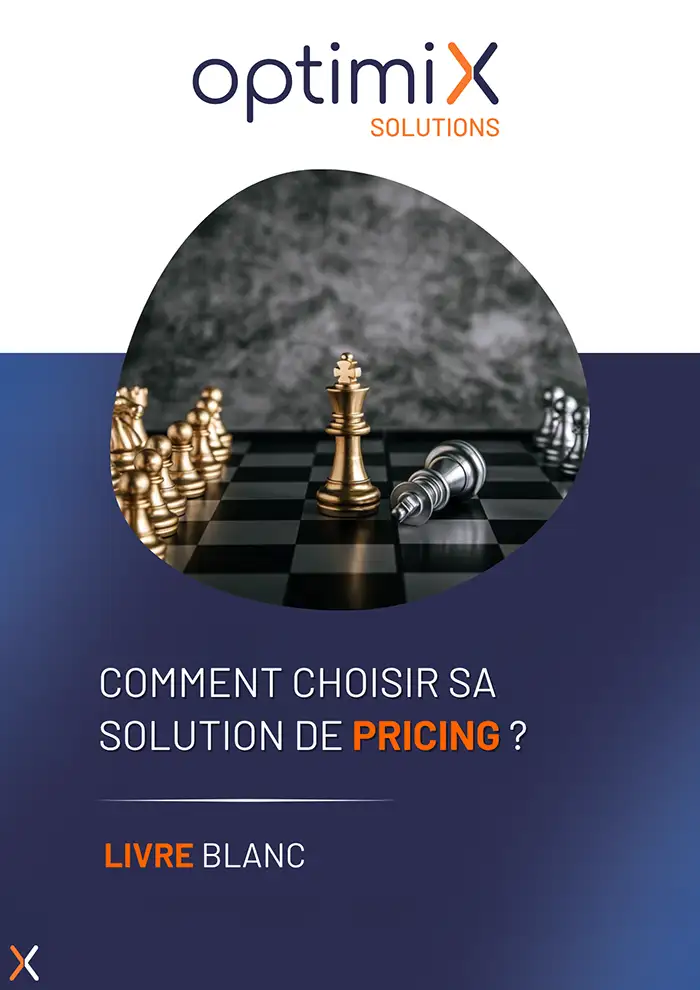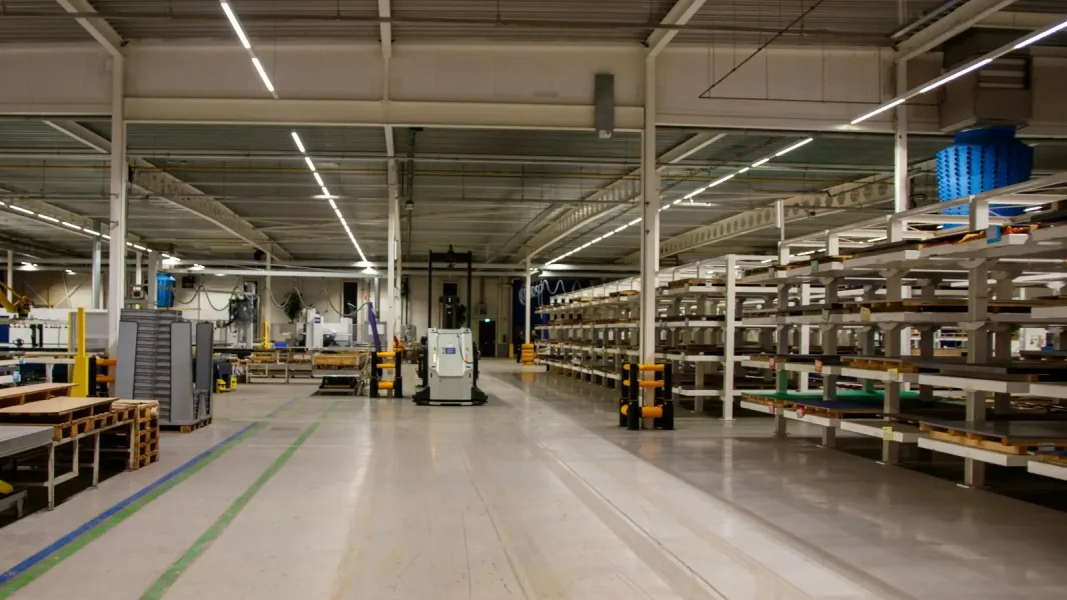Prices now evolve faster than margins. Faced with reactive competitors and increasingly informed consumers, many companies struggle to adjust their prices at the right time. Price monitoring has therefore become an essential lever: far beyond simple comparison, it deciphers market dynamics, detects weak signals, and guides business decisions.
For retailers, pricing that is consistent with their overall strategy is becoming an imperative: it’s all about preserving margins, aligning the offer with customer expectations and remaining competitive in an environment where every adjustment can make a difference.
Thanks to price monitoring tools these tools provide companies with a genuine means of anticipating and steering the market, enabling them to monitor the prices charged by competitors, maintain profitability and adapt their offering to actual expectations.
This step-by-step guide will help you set up an effective price watch, select the right solutions, exploit the available data, and turn data into a sustainable competitive advantage.
What is tariff watch?
Price intelligence involves monitoring the prices charged by your competitors and analyzing market trends, in order to identify opportunities and risks for your business. It involves collecting, analyzing and interpreting pricing data, as well as understanding the mechanisms that influence pricing decisions.
The main objectives are to anticipate competitive movements, adjust prices to remain competitive, detect anomalies and identify levers to improve margins. Effective monitoring also enables us to understand how customers perceive value, and to ensure that pricing policy is consistent with market expectations.
Why is tariff monitoring essential in 2025?
Price monitoring is a key strategic tool for any company wishing to remain competitive. It’s not just about monitoring prices: it’s about understanding market trends, anticipating competitor movements and proactively adjusting strategy.
- The first reason is market dynamics. Companies need to react quickly to price changes, one-off promotions or strategic adjustments by their competitors. Without effective price monitoring, it’s easy to lose market share or miss out on major opportunities.
- Margin protection is also a major challenge. Procurement, production and logistics costs fluctuate regularly, and accurate price monitoring helps identify segments where price adjustments are possible, thus guaranteeing optimum profitability.
- What’s more, consumer expectations are changing. Customers are no longer satisfied with the lowest price. They evaluate quality, perceived value and associated service. Relevant price intelligence helps to understand how competitors are positioning themselves and what offers are available, thus improving customer satisfaction, price image .
- Last but not least, price monitoring offers a capacity for anticipation and risk management. Economic developments, regulatory changes and market volatility can rapidly influence prices. Reliable, up-to-date information enables you to react in good time and make strategic decisions based on concrete data.
How do you set up an effective pricing watch?
Effective price monitoring is based on a structured methodology:
- Define objectivesIdentify the products to be monitored, the information to be collected and the relevant indicators.
- Select competitorsTrack not only direct players, but also emerging and alternative competitors, for a complete picture.
- Data collection and analysis: Displayed prices, promotions, sales conditions, and bundled offers.The analysis must detect discrepancies, identify trends and assess the potential impact on margins.
- Take actionSales: adjust prices, launch targeted promotions and align sales strategy with insights gathered.
Price watch : The different methods
There are several ways to monitor prices:
Manual watch allows us to observe prices and promotions on competitor sites and physical catalogs. This method offers a qualitative understanding, but is limited by the size of the market and the frequency of updates.
Automated monitoring uses tools to continuously collect, centralize and analyze data. It is particularly well suited to companies with large catalogs or multiple distribution channels.
Hybrid intelligence combines the two approaches to benefit from the qualitative richness of manual observations and the speed and exhaustiveness of automated tools.
Each method must be chosen according to company size, catalog complexity and strategic objectives. Efficiency depends on accurate data collection, in-depth analysis and responsive decision-making.
The different types of monitoring
Intelligence is not limited to a single dimension: each company can activate different systems depending on the issues at stake. Here are the most common forms:
▪ Strategic intelligence
Captures major market trends, sector mutations and movements of key players. It sheds light on long-term orientations and guides development choices.
▪ Competitive intelligence
Focuses on competitors’ actions: product launches, marketing campaigns, partnerships, pricing changes. It helps you anticipate their moves and position yourself effectively.
▪ Technology watch
Targets innovations, patents, new solutions and technical developments. Indispensable for staying on the cutting edge, adapting your offering and avoiding obsolescence.
▪ Sales intelligence
Directly concerns customers and prospects: buying behavior, expectations, consumer trends, changes in distribution channels. It feeds the construction of relevant and differentiating offers.
▪ Legal and regulatory watch
Identifies new laws, standards and obligations impacting the sector. A crucial step in staying compliant, anticipating risks and avoiding sanctions.
▪ Image watch
Measures brand reputation and perception, particularly on social networks and the media. It makes it possible to detect weak signals, monitor customer satisfaction and protect e-reputation.
What tools and solutions are needed for effective price monitoring?
Tools and solutions for effective price monitoring vary considerably according to company size, sector of activity and complexity of product ranges. For small and medium-sized businesses, lightweight, flexible solutions may suffice, enabling automated or semi-automated collection of competitive data, and rapidly obtaining a clear view of market prices. These tools make it easier to compare products and identify significant deviations from one’s own pricing policy.
For larger companies, or those with extensive product catalogs, more advanced platforms offer multi-channel data centralization, statistical analysis and continuous monitoring.
These solutions not only collect a large volume of information, but also structure it to detect trends, analyze the impact of price variations on sales, and anticipate competitive movements. The ability to manage different product categories, points of sale or geographical areas is an essential criterion for choosing the most appropriate solution.
Beyond data collection and analysis, a good pricing intelligence tool must also offer clear, usable reporting functionalities, enabling pricing, marketing and sales teams to make quick, relevant decisions. Integration with existing systems, the ability to automate alerts in the event of significant variations, and the flexibility to adjust parameters according to internal needs are all decisive factors in the overall effectiveness of price intelligence.
XPA – Optimix Pricing Analytics: The 360° pricing intelligence tool
Price is one of the most powerful levers for attracting, converting and retaining customers. But defining the right pricing strategy requires much more than simply monitoring the competition: it requires tools capable of analyzing, anticipating and supporting decision-making.
The Optimix XPA solution responds to this challenge by transforming pricing intelligence into a real strategic asset thanks to AI, predictive algorithms. Here are just a few of the features of this pricing intelligence tool:
Create unlimited pricing rules to harmonize your ranges and automate adjustments thanks to AI,
Monitor your competitors’ prices in real time and receive immediate alerts,
In-depth competitor analysis using machine learning and advanced AI algorithms,
Perform predictive simulations to anticipate the impact of new products, promotions or price changes,
Maximize profitability with data-driven pricing scenarios.
Using automation and artificial intelligence to monitor prices
Automation and artificial intelligence are revolutionizing pricing, competitive intelligence and monitoring. No more tedious manual tasks: systems continuously scan competitor sites, collect prices, promotions and assortments, then centralize this data into usable dashboards.
AI adds a predictive dimension: detecting weak signals, anticipating competitive reactions, identifying customers sensitive to price variations. It also enables dynamic price adjustments, guaranteeing competitiveness and profitability.
These technologies offer sales and pricing teams real-time analysis, better anticipation of trends, and the ability to transform information into fast, accurate decisions. The result: more effective intelligence, optimized pricing strategy and enhanced competitiveness.
Use monitoring results to steer your pricing strategy
The data generated by pricing, competitive and digital intelligence is only of value if it is put to operational use in pricing policy and in the company’s overall thinking. Properly used, they enable us not only to react quickly to market movements, but also to anticipate trends, detect weak signals and make informed decisions to strengthen competitiveness and brand image.
Adjusting prices remains the first lever. By continuously comparing its prices with those of competitors, using dashboards and taking into account customer sensitivity, the company can adapt its prices by product, segment or channel in order to remain attractive while preserving its margins.
Optimizing promotions is another major focus. Sales and marketing intelligence helps to identify the most effective offers, avoid cannibalization between products, and plan campaigns at the best time to maximize return on investment.
Segmenting and personalizing prices also becomes possible thanks to the information collected: adapting prices according to customer profiles, geographical zones, seasons or sales channels enables us to capture the value of each segment more finely, while meeting expectations.
Last but not least, these various tools feed into long-term planning. Analysis of consumer trends, purchasing behavior, online conversations and competitive initiatives provides a forward-looking vision that is essential for aligning pricing policy with overall corporate strategy and maintaining sustainable competitiveness.
How do you monitor prices effectively?
Setting up a price watch is more than just comparing competitors’ prices. It’s an ongoing process that combines tools, methods and analysis to transform raw data into competitive advantage. Here are the key steps:
1. Define your goals
Identify priorities: preserve margins, gain competitiveness, adjust promotions, price image…
Establish KPIs: average price trends, deviations from competitors, impact of promotions.
2. Select the right price monitoring tools
Use solutions capable of automatically collecting prices (competitor sites, marketplaces, digital catalogs).
Focus on comprehensive tools that go beyond data.
3. Identify the scope of monitoring
Define the list of competitors to monitor (direct and indirect).
Select the product ranges, services or strategic segments to be analyzed.
4. Collecting and structuring data
Automate information retrieval (prices, promotions, ancillary costs, commercial conditions).
Centralize data in a common repository to facilitate analysis.
5. Analyze and interpret
Compare prices with those of competitors and identify significant differences.
Detect seasonal trends, recurring promotions or rapid adjustment behavior.
Use AI and machine learning to anticipate pricing movements.
6. Taking action
Dynamically adjust prices to remain competitive while preserving margins.
Adapt promotions and communications according to insights gathered.
Test different scenarios (simulations) before rolling out a large-scale tariff change.
7. Implement continuous monitoring
Create automatic alerts on significant variations.
Adapt scope and indicators to market conditions.
Involve marketing, sales and pricing teams to exploit results.
Price monitoring: a lever for preserving your margins
Price monitoring is a decisive lever for guiding pricing policy and preserving competitiveness. It helps to detect market trends, anticipate competitor adjustments and set prices that protect margins while remaining aligned with customer expectations.
A structured, automated monitoring system improves profitability, optimizes promotions and enhances responsiveness to market changes. The use of high-performance pricing intelligence tools, such as XPA – Optimix Pricing Analytics, offers an additional advantage: predictive analysis, simulations and clear visualization of pricing strategies.
By combining methodology, technology and expert analysis, price monitoring becomes a major asset for making informed decisions, anticipating changes and sustaining company growth in a demanding competitive environment.








